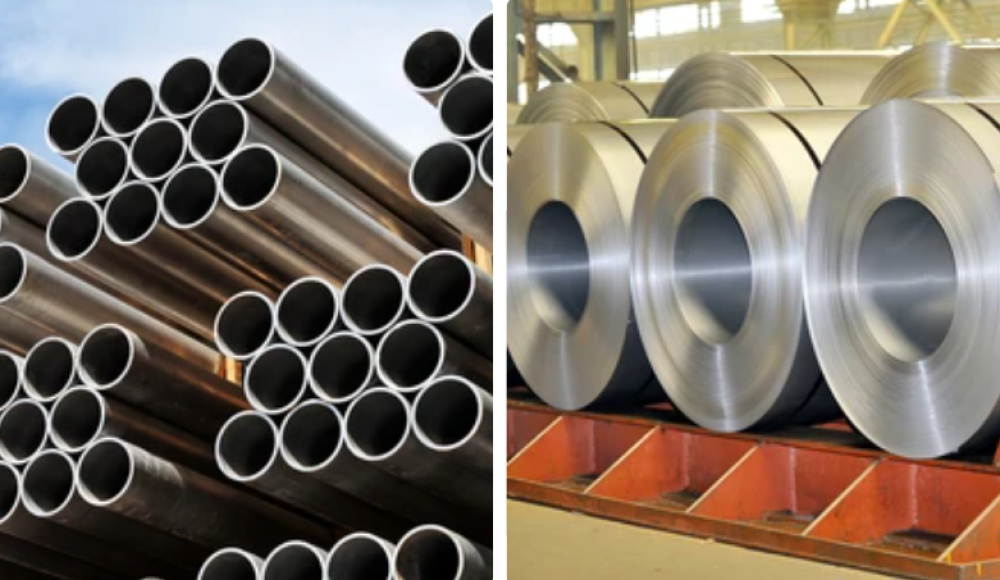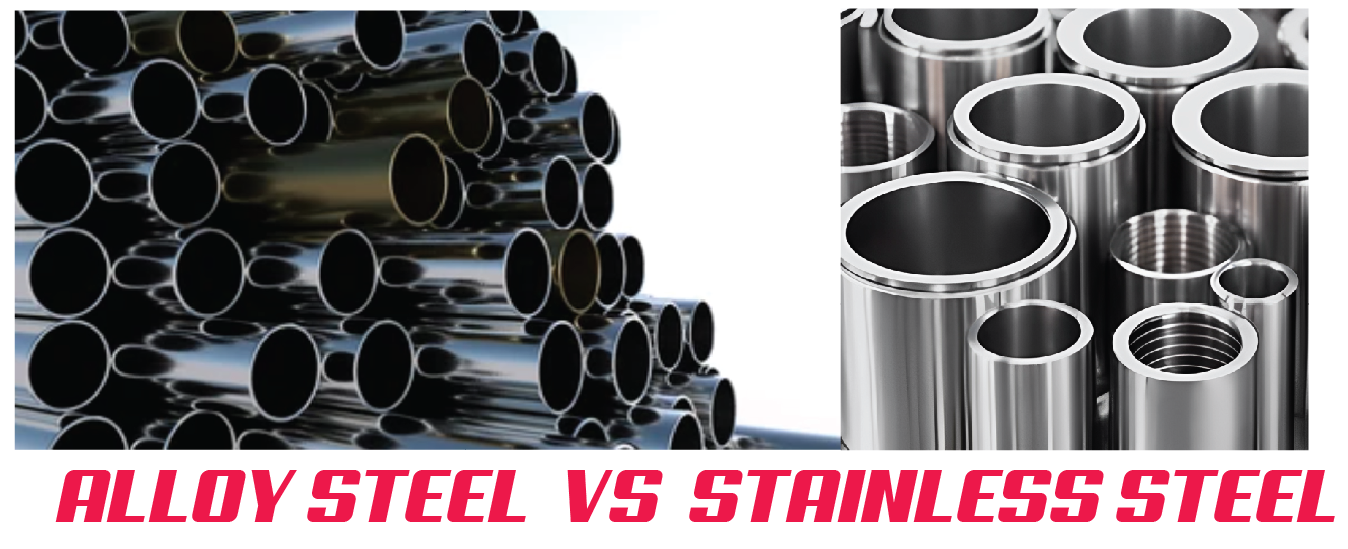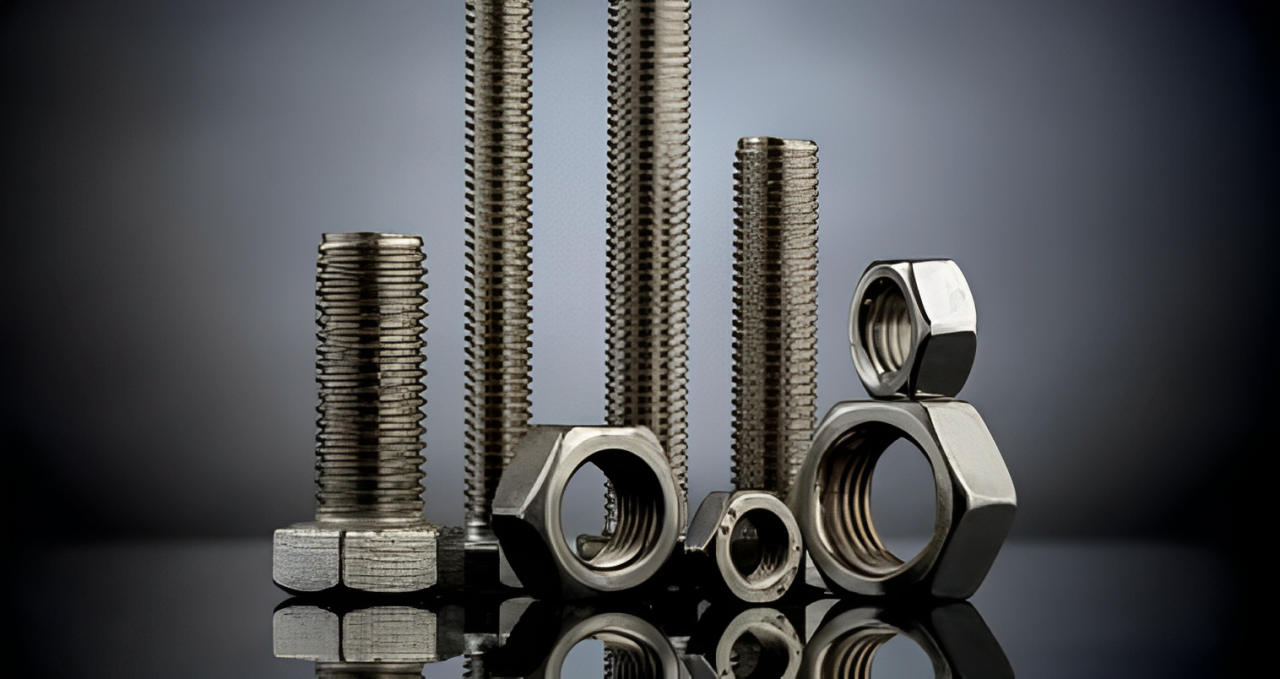كما هو معروف على نطاق واسع فُولاَذ يلعب دورًا في العديد من الفروع الصناعية, للبناء, تصنيع مختلف, وصناعة السيارات. تشمل أنواع مختلفة من الدرجات الفولاذية المتوفرة اليوم الصلب والفولاذ المقاوم للصدأ من بين المنتجات الأخرى لأن هذه المنتجات مفوز للاستخدامات بسبب خصائصها المرنة ومستويات عالية من المتانة. ولكن بعد ذلك ، يحتوي كل نوع من أنواع الصلب على ميزات فريدة من نوعها المؤهلة لبعض التطبيقات. في هذه المقالة, سوف تكتشف ماهية مواد الصلب والفولاذ المقاوم للصدأ, اختلافات أنواعهم, ونصائح مفيدة لتحديد موعد استخدام كل مادة لإنتاج الأجزاء الخاصة بك.
ما هو سبيكة الصلب?
يشير سبيكة الصلب إلى الفولاذ مع عنصر أو أكثر من عناصر السبائك, أي. المنغنيز, الكروم, النيكل, الموليبدينوم, الفاناديوم, والسيليكون. تختلف كميات هذه العناصر عمومًا وعادة ما تتكون من واحد وخمسين في المائة. كنتيجة مباشرة, يحسن خصائص القوة, قابلية التشغيل, صلابة, تآكل, وارتداء. يتم تطبيق سبيكة الصلب في الصناعات التي تتطلب قوة وعوائد عالية تشمل; الطيران, سيارات, والقطاعات الميكانيكية.
ما هو الفولاذ المقاوم للصدأ?
الفولاذ المقاوم للصدأ هو مادة تستخدم في البناء لأنها سبيكة من الصلب لا تقل عن 10, أو 5% الكروم. لذا, إنه يضمن حماية التآكل المتميزة من خلال طبقة أكسيد الكروم CR2O3. كما أن لديها مكونات أخرى بما في ذلك النيكل, و molybdenum التي تزيد أيضًا من قدرتها على عدم التعاقد مع الصدأ, تلطيخ, والتآكل. لذا, أهم صفات قيمة العملاء هي مظهرها, الخصائص الصحية, والمتانة, وهذا هو السبب في أن الفولاذ المقاوم للصدأ مطلوب في العديد من الفروع. قد تشمل هذه صناعة المواد الغذائية, إنتاج الأدوات الطبية, بناء, إلخ.
أنواع الصلب من سبائك
لذا, فيما يلي أشكال مختلفة من الصلب وتراكيبها, ملكيات, ويستخدم في الصناعات.
| نوع من الصلب سبيكة | توضيح | الخصائص الرئيسية | التطبيقات النموذجية |
| سبائك الصلب منخفضة | يتضمن < 5% عناصر السبائك | خصائص ميكانيكية محسنة | التطبيقات الهيكلية, الجسور, المباني |
| سبائك الصلب عالية | يتضمن > 5% عناصر السبائك | صلابة متفوقة وارتداء المقاومة | تطبيقات عالية الأداء, الأدوات الصناعية |
| كرومولي ستيل | كروم ميليبدينوم سبيكة | قوة عالية, مقاوم للحرارة | أجزاء الفضاء الجوي, مكونات السيارات |
| سبيكة النيكل الصلب | يحتوي على النيكل من أجل المتانة | صلابة ممتازة في درجات الحرارة المنخفضة | التطبيقات المبردة, أوعية الضغط |
| الصلب المنغنيز | معروف بالقوة عالية التأثير | مقاومة التآكل | ارتداء أجزاء (على سبيل المثال, كسارات الصخور, مسارات السكك الحديدية) |
أنواع الفولاذ المقاوم للصدأ
لذا, دعنا نناقش أنواع مختلفة من الفولاذ المقاوم للصدأ في الجدول التالي.
| نوع من الفولاذ المقاوم للصدأ | توضيح | الخصائص الرئيسية | التطبيقات النموذجية |
| الفولاذ الأوستنيتي المقاوم للصدأ | النوع الأكثر شيوعا; غير مغناطيسية | مقاومة ممتازة للتآكل, القابلية للتشكيل | معدات المطبخ, أجهزة طبية |
| الفولاذ المقاوم للصدأ الحديدي | أنه يحتوي على الكروم وقليل من النيكل | مقاومة التآكل المعتدلة, قابلية تشكيل جيدة | قطع غيار السيارات, الأجهزة |
| الفولاذ المقاوم للصدأ المارتنسيتي | يحتوي على أعلى الكربون; المعروف عن الصلابة | قوة وصياغة عالية | الأدوات الجراحية, أدوات القطع |
| دوبلكس ستانلس ستيل | يجمع بين الخصائص الأوستنية والفيريتية | قوة عالية, مقاومة ممتازة للتآكل | صناعة النفط والغاز, المعالجة الكيميائية |
| تصلب الفولاذ المقاوم للصدأ | تعززها المعالجة الحرارية | قوة استثنائية | مكونات الفضاء الجوي, أدوات عالية الأداء |
مقارنة بين سبيكة الصلب مقابل. الفولاذ المقاوم للصدأ
بين الحين والآخر نواجه عبر مصطلحات الصلب والفولاذ المقاوم للصدأ. دعونا نناقش الاختلافات الرئيسية بينهما.
1. المقاومة للتآكل
الفولاذ المقاوم للصدأ محصن للغاية من التآكل من خلال محتويات الكروم. يميل إلى تكوين طبقة أكسيد مما يجعلها مناسبة للرطوبة أو أي بيئة أخرى من التآكل. لكن, لكي تقدم سبيكة الصلب نفس المستوى من المقاومة ، يجب وضعها تحت العلاج غير المقاوم بطبيعتها.
2. قوة
اعتمادًا على نوع عناصر صناعة السبائك المستخدمة, يمكننا تحسين قوة الشد في الصلب من سبائك لتحسين الأداء العالي. بالإضافة إلى, الفولاذ المقاوم للصدأ لديه قوة أعلى من الفولاذ الكربوني وليس أقوى من الفولاذ السبائك.
3. يكلف
الفولاذ المقاوم للصدأ أكثر تكلفة بقليل من الصلب سبيكة بسبب استخدام الكروم والنيكل ومستوى الصعوبة عند معالجته. على سبيل المثال, يمكن أن تكون مقالات الصلب من السبائك أرخص في الغالب لأنها يمكن أن توظف وكلاء سبائك أرخص.
4. جمالي
المطاط لديه مقاومة تآكل ممتازة مقاومة كيميائيا ويستخدم في الغالب في الجوارب. الفولاذ المقاوم للصدأ لديه لامعة, نظرة مصقولة ويستخدم حيث يمكن أن يكون المظهر مهمًا, أي. القطب. لكن, الفولاذ من السبائك غير جذاب بصريًا ولكنه أكثر وظيفية.
5. الخصائص المغناطيسية
لا يشعر معظم الفولاذ غير القابل للصدأ بالجاذبية المغناطيسية وهي مناسبة للاستخدامات حيث يكون المغناطيسية مهمة. مثل معظم الفولاذ, العديد من أوراق السبائك لديها ما يعرف باسم "الاستجابة المغناطيسية", وهو أمر مرغوب فيه في بعض الأحيان في الاستخدامات الصناعية.
6. متانة
تم تطوير سبيكة الصلب للتعامل مع الإجهاد العالي مما يجعلها قوية ودائمة تحت الضغط. يوفر معظم الفولاذ المقاوم للصدأ مقاومة جيدة ضد التآكل ولكن خصائصها الميكانيكية قد لا تحتوي على فولاذ من سبائك عالي القوة تحت الأحمال العالية.
7. مقاوم للحرارة
في الحالات اللاحقة التي يكون فيها الإجهاد الحراري مشكلة, عادة ما يكون أداء الفولاذ المقاوم للصدأ أفضل لأنه لا يفقد الشكل تحت درجات حرارة عالية. ولكن اعتمادا على صياغتها, نستخدم سبيكة الصلب, تم تطويره خصيصًا لقوة درجات الحرارة العالية.
8. قابلية التشغيل
من الأسهل العمل مع الصلب من السبائك بشكل خاص عند تصميم الهياكل المعقدة التي قد تتطلب عملًا متطورًا. الفولاذ المقاوم للصدأ, حتى أقوى, هو أيضا أثقل وأكثر صعوبة في العمل بسبب صلابة. علاوة على ذلك, لديها مشاكل في تصلب العمل الكهرومغناطيسي.
| خاصية | سبائك الصلب | الفولاذ المقاوم للصدأ |
| المقاومة للتآكل | يتطلب علاجات خاصة; أقل مقاومة | شديدة المقاومة بسبب محتوى الكروم |
| قوة | ارتفاع قوة الشد (ما يصل الى 250,000 رطل لكل بوصة مربعة) | قوة معتدلة (ما يصل الى 200,000 رطل لكل بوصة مربعة) |
| يكلف | عموما أكثر بأسعار معقولة ($0.50 - 2.00 دولار/رطل) | أكثر تكلفة ($1.50 - 4.00 دولارات/رطل) |
| جمالي | أكثر وظيفية; عموما الانتهاء غير لامع | ثمين للامعة, مظهر مصقول |
| الخصائص المغناطيسية | يحتفظ بالخصائص المغناطيسية | معظم الدرجات غير مغناطيسية |
| متانة | ممتاز تحت الضغط الشديد | متينة ضد التآكل |
| مقاوم للحرارة | يختلف على أساس التكوين; ما يصل إلى 1200 درجة فهرنهايت | يحافظ على النزاهة حتى 1500 درجة فهرنهايت |
| قابلية التشغيل | أسهل في الجهاز وتصنيع | أكثر صعوبة في اللحام والشكل |
نصائح يجب مراعاتها عند اختيار الفولاذ المثالي لمشروع الآلات الخاص بك
فيما يلي عوامل مهمة تفكر فيها أثناء اختيار الفولاذ المثالي لمشروعك.
- المقاومة للتآكل: اختر الفولاذ المقاوم للصدأ للمناطق المعرضة للماء أو المواد الكيميائية.
- القوة والمتانة: اختر الصلب من سبائك إذا كان من الضروري الحصول على قوة شد عالية ومستوى معين من المتانة.
- يكلف: تكاليف الصلب من السبائك أقل من تكاليف الفولاذ المقاوم للصدأ.
- المتطلبات الجمالية: يجب استخدام الفولاذ المقاوم للصدأ في المشاريع التي يتطلب فيها المنتج النهائي بعض العناصر المصقولة والجمالية.
- القدرة على التصنيع: قد يكون من الصعب العمل أنواعًا معينة من المواد أكثر صعوبة ، لذا فإن الاختيار يعتمد على ما هو مرغوب فيه لمشروع معين.
تطبيقات سبيكة الصلب
لذا, فيما يلي بعض التطبيقات الشائعة لصلب السبائك:
- مكونات السيارات: شائعة لأعمدة التروس والمحاور لأنها مادة صعبة وقوية.
- أجزاء الفضاء الجوي: مناسبة لمعدات الهبوط على الطائرات وشفرات التوربينات بسبب خصائصها عالية الحرارة.
- بناء: يعمل في أجزاء هيكلية عالية القوة مثل الجسور والمباني.
- الأدوات: شعبية في أجزاء الحفر, المناشير, وأدوات الماكينة نتيجة صلابة هذا النوع من الصلب.
- زيت & صناعة الغاز: المطبق في خطوط الأنابيب وأوعية الضغط لقوته وخدمته العالية في درجات حرارة مرتفعة.
تطبيق الفولاذ المقاوم للصدأ
لذا, فيما يلي بعض التطبيقات الشائعة للفولاذ المقاوم للصدأ:
- معدات طبية: يتم استخدامه عندما يتم تطبيق أدوات الجراحة والزرع بسبب قدرتها على تجنب التآكل ولها خصائص صحية.
- معالجة الأغذية: واسعة في الثلاجات, مواقد, أدوات المطبخ, وتعبئة المواد الغذائية بسبب ميزاتها الصحية.
- بناء: المطبق في بناء الارتفاعات الخارجية, أسطح, والشرفات بسبب الصلابة والمظهر الزينة.
- السيارات: يستخدم في أنظمة العادم والقسط, لأنه لا يتآكل.
- المعالجة الكيميائية: تنطبق على الدبابات, الصمامات, والأنابيب للتعامل مع المواد الكيميائية للتآكل.
إيجابيات وسلبيات سبيكة الصلب
فيما يلي إيجابيات وسلبيات الصلب:
مزايا:
- هذه المادة لها نسبة عالية من القوة إلى الوزن يعني أنها آمنة وفعالية عالية من الطاقة.
- صلابة متفوقة.
- براعة كبيرة في خصائصها الميكانيكية.
- مقاومة التآكل جيدة.
- الفائدة في التطبيقات المختلفة في تطبيقات الإجهاد.
محددات:
- يجب أن تكون مطلية أو مطلية للحماية من الصدأ والتآكل.
- يمكن أن يكون أكثر هائلة لتحليلها باستخدام آلة.
- إنها مادة باهظة الثمن من الصلب الكربوني.
- عرضة للصدأ إذا لم يكن الاعتناء جيدًا.
- لا ترضي العين مثل الفولاذ المقاوم للصدأ.
إيجابيات وسلبيات الفولاذ المقاوم للصدأ
مزايا:
- إنه يوفر مقاومة كبيرة للتآكل.
- سهلة التنظيف والصيانة.
- الانتهاء اللامع إلى الأسطح المصممة بشكل جذاب.
- مقاومة درجات الحرارة العالية.
- متينة وطويلة الأمد.
محددات:
- مكلف من مواد الصلب من سبائك لبناء العناصر.
- بعض الدرجات يصعب اللحام والآلة.
- عرضة لتكسير التآكل.
- ليست أقوى من الصلب سبيكة في بعض التطبيقات.
- أثقل من بعض أنواع الصلب.
متى تختار سبيكة الصلب?
- عندما يدعو مشروعك إلى مزيد من القوة والصلابة.
- لتلك التطبيقات التي تتعرض لظروف درجة الحرارة المرتفعة أو الحمل الثقيل.
- عندما تكون التكلفة مشكلة لا يمكن التغاضي عنها ويجب الاحتفاظ بها إلى الحد الأدنى.
- عندما لا يكون التآكل عاملاً رئيسياً, أو عندما تكون هذه العلاجات الخاصة ممكنة.
- الأجزاء التي ستواجه التعب والفرك.
متى تختار الفولاذ المقاوم للصدأ?
- للتطبيقات, حيث يكون الشرط لمقاومة عالية للبيئة التآكل.
- عندما يكون مظهر ونظافة المادة المادية.
- يعتمد السيراميك كثيرًا على استخدامها في المناطق التي تتلامس فيها بالمواد الكيميائية أو الرطوبة.
- في المشاريع التي يكون طول عمر المبنى أمرًا مهمًا.
- إنها مادة ناعمة وغير مغناطيسية, تستخدم بشدة في تصنيع بناء المنتجات.
خاتمة
ختاماً, سبيكة الصلب مقابل. تقدم غير القابل للصدأ العديد من الميزات وقد يوصى به لاستخدامات مختلفة. يتم استخدام الصلب من السبائك حيث من المحتمل أن يكون الإجهاد مرتفعًا. إلى جانب ذلك, من المهم قوة وصبدة المادة. لكن, يجب استخدام الفولاذ المقاوم للصدأ في التطبيقات الكهربائية حيث تكون المظهر الأنيق والنظافة مهمة وكذلك مقاومة التآكل. يمنحك تقييم هاتين المادتين واختلافاتهما المعلومات الصحيحة. لذا, يمكنك اختيار أفضل مادة لمشروعك عند اختيار الصلب.
أسئلة مكررة
1. ما هو الفرق بين الصلب والفولاذ المقاوم للصدأ?
تشتهر Alloy Steel بقوته العالية والصلابة في حين أن الفولاذ المقاوم للصدأ معروف بمقاومته للهجوم المسبق.
2. ما هو الفولاذ أكثر ملاءمة للاستخدام في درجات حرارة عالية?
يفضل الفولاذ من السبائك حيث تشارك الحرارة لأنه يحتوي على خصائص أفضل مقاومة للحرارة من الفولاذ المقاوم للصدأ.
3. هو مغناطيسي من الفولاذ المقاوم للصدأ?
الفولاذ المقاوم للصدأ martensitic على سبيل المثال مغناطيسي في حين أن الفولاذ المقاوم للصدأ الأوستيني ليس.
4. هل يمكن لصدأ الصلب?
نعم, إنها حقيقة أنه إذا لم يتم حماية الصلب من السبائك من خلال الطلاءات المقاومة للتآكل, ثم يمكن الصدأ.
5. هو الفولاذ المقاوم للصدأ أكثر صعوبة في الجهاز من الصلب سبيكة?
قد تكون تصنيع الفولاذ المقاوم للصدأ أكثر صعوبة بسبب قوتها المتأصلة الإضافية, على الرغم من أن هذا يعتمد على درجات الصلب.
6. أي فولاذ أكثر تكلفة من الصلب أو الفولاذ المقاوم للصدأ?
الفولاذ المقاوم للصدأ أكثر تكلفة من الفولاذ الكربوني العادي بسبب تكوينه أكثر من الكروم والنيكل.
7. التي هي الصناعات هي المنتجات المصنوعة من سبيكة الصلب مناسبة?
يمكن استخدام الصلب من سبائك في الفضاء, السيارات, بناء, وصناعات النفط.











1 فكرت في "سبائك الصلب مقابل الفولاذ المقاوم للصدأ: دليل شامل”